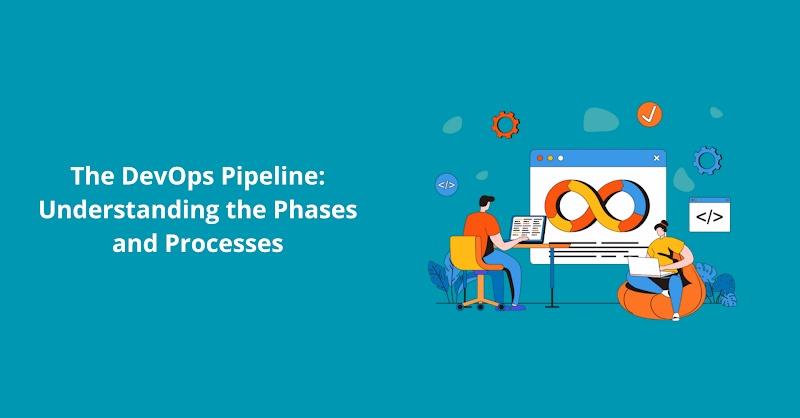The importance of agility and efficiency cannot be overstated. DevOps enters the picture here, revolutionising how software is built, tested, and delivered. DevOps has grown in popularity in recent years, resulting in the creation of the DevOps Engineer and the pursuit of DevOps Certification. In this blog article, we will look at the DevOps pipeline, breaking it down into steps and procedures and emphasising the need for DevOps certification for prospective DevOps engineers.
Defining the DevOps Pipeline
The DevOps pipeline is the DevOps philosophy’s backbone, comprising a sequence of phases and processes that allow for the seamless integration and delivery of software. It seeks to close the gap between development and operations teams by encouraging collaboration, decreasing bottlenecks, and improving the whole software development lifecycle.
Phases of the DevOps Pipeline
Below are the phases of the DevOps pipeline:
Plan
The first step in the DevOps pipeline is to design and strategize the development process. This phase focuses on the alignment of business objectives with technological implementation. Teams decide on and prioritise the features and functions to be created. Collaboration is essential since the development and operations teams collaborate to ensure that all factors are examined before progressing.
Develop
Development begins when the planning phase is completed. The real coding and programming are done here. Continuous integration (CI) solutions, which automatically merge code changes into a common repository, are emphasised in DevOps. This practice aids in the early identification and resolution of disputes, hence lowering integration challenges later on.
Test
Testing is an important step in the DevOps process. Throughout the development process, quality assurance and testing are carried out constantly. This includes automated testing scripts that check the code’s functionality, security, and performance. The objective is to detect flaws and issues as early as possible, ensuring that the final product satisfies high-quality requirements.
Deploy
Deployment is the process of releasing software into production settings. Continuous deployment (CD) technologies automate the process of delivering code changes from development to production environments. This step enables a seamless and uniform release procedure, reducing the possibility of deployment problems.
Operate
The software is monitored and managed in a production environment in the operation phase. DevOps engineers monitor performance, detect possible problems, and respond to crises rapidly. Automation is critical in this case, enabling autonomous scalability, self-healing, and proactive application management.
Feedback
Without input, the DevOps cycle is incomplete. This phase entails receiving input on the deployed software from users and stakeholders. This input is useful for iterative changes and upgrades in succeeding development cycles, resulting in a continuous improvement loop.
Processes within the DevOps Pipeline
- The DevOps pipeline is more than simply stages; it is also about the mechanisms that propel each phase ahead. These procedures rely heavily on automation, collaboration, and monitoring.
- DevOps is built on automation. It entails employing tools and scripts to automate repetitive operations such as software development, testing, and deployment. Automation improves uniformity, decreases manual mistakes, and speeds up the development process. Automation in action may be seen in CI/CD tools, configuration management tools, and infrastructure provisioning systems.
- DevOps eliminates conventional barriers between development and operations teams. Shared duties, open communication, and collective decision-making promote collaboration. Collaboration tools, version control systems, and integrated development environments (IDEs) make it easier to work together as a team.
- Continuous monitoring is critical for detecting problems and bottlenecks in real-time. Monitoring tools give information on the behaviour of applications, the health of infrastructure, and the user experience. As part of the operation and feedback stages, feedback loops guarantee that user feedback is incorporated into continuing development, improving the software’s features and usability.
The Role of DevOps Certification for Aspiring DevOps Engineers
- As DevOps practises are adopted more often, there is a growing need for competent DevOps engineers. DevOps certification has emerged as a crucial credential for anybody looking to demonstrate their expertise in this field.
- A person’s expertise in various DevOps technologies practises and a DevOps certification confirms approaches. It shows that it can function across the whole DevOps process, from planning to deployment. Prospective DevOps engineers can obtain verifiable proof of their skills and knowledge through certification.
- Companies that wish to enhance their software development methodologies seek certified DevOps professionals. A DevOps certification may open up various job prospects, including those for release managers, automation engineers, and DevOps engineers.
- DevOps is a field that constantly changes as new tools and techniques are introduced. Candidates for DevOps certification must be knowledgeable about the latest developments in technology. Being dedicated to lifelong learning is crucial for maintaining a competitive edge in the job market and contributing to DevOps projects.
Conclusion
Software development teams can communicate, automate, and build high-quality software at a quick clip thanks to the DevOps pipeline, a dynamic framework. Each of its several phases adds to the software development lifecycle’s overall efficiency and effectiveness. Anyone hoping to become a DevOps engineer will find having a DevOps certification to be a handy tool as the field gains in popularity. Ambitious DevOps engineers may position themselves as significant contributors to contemporary software development by becoming familiar with the stages and practises of the DevOps pipeline and obtaining the necessary certifications.
